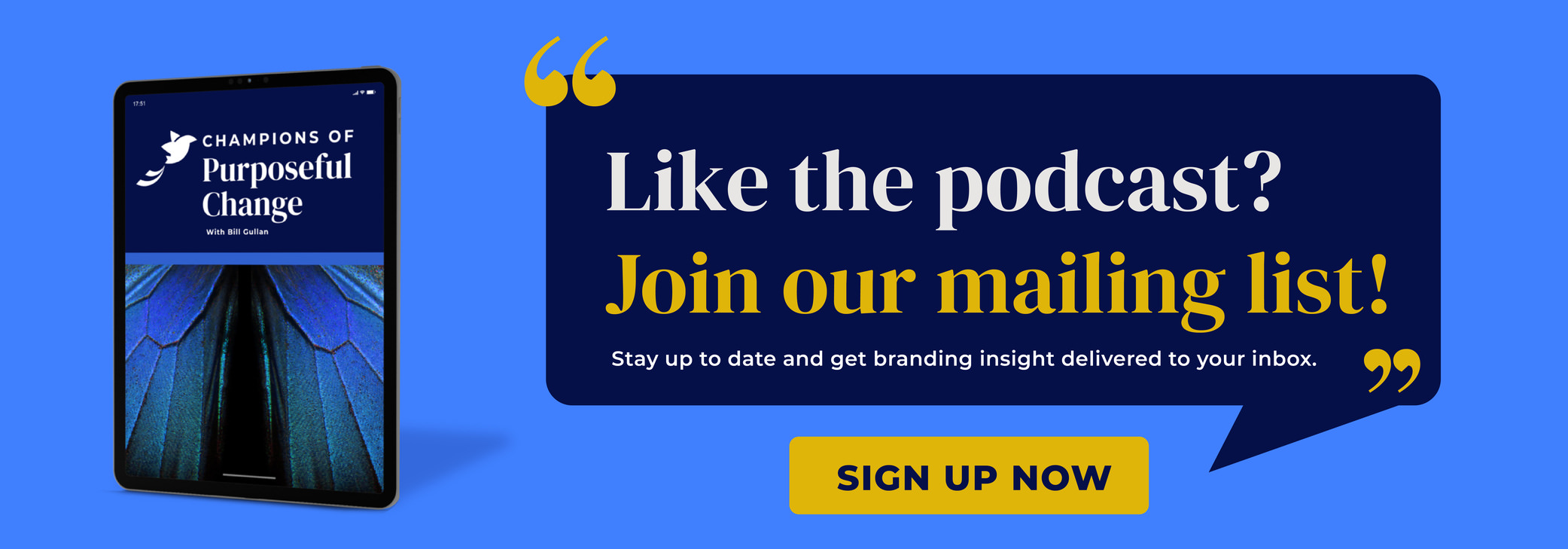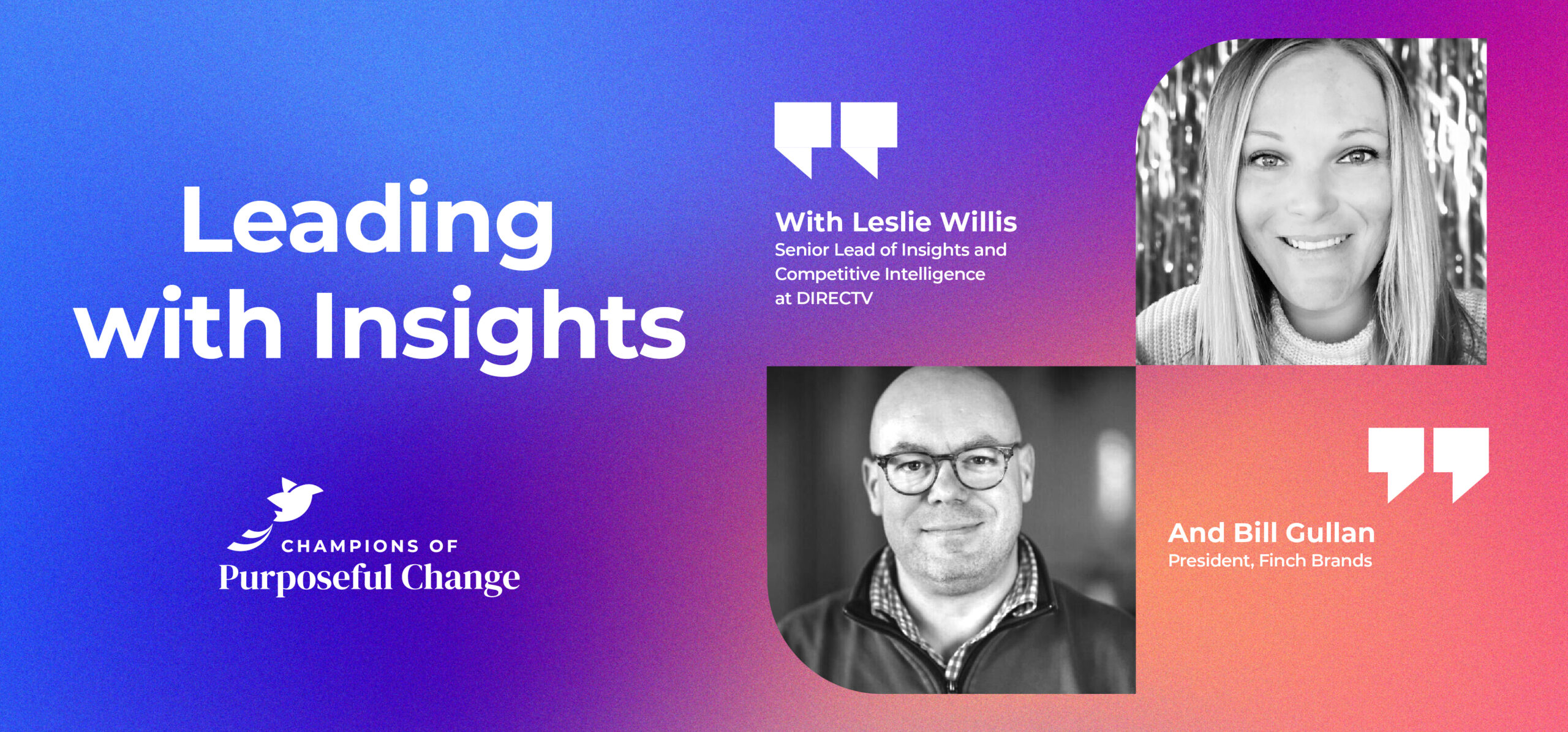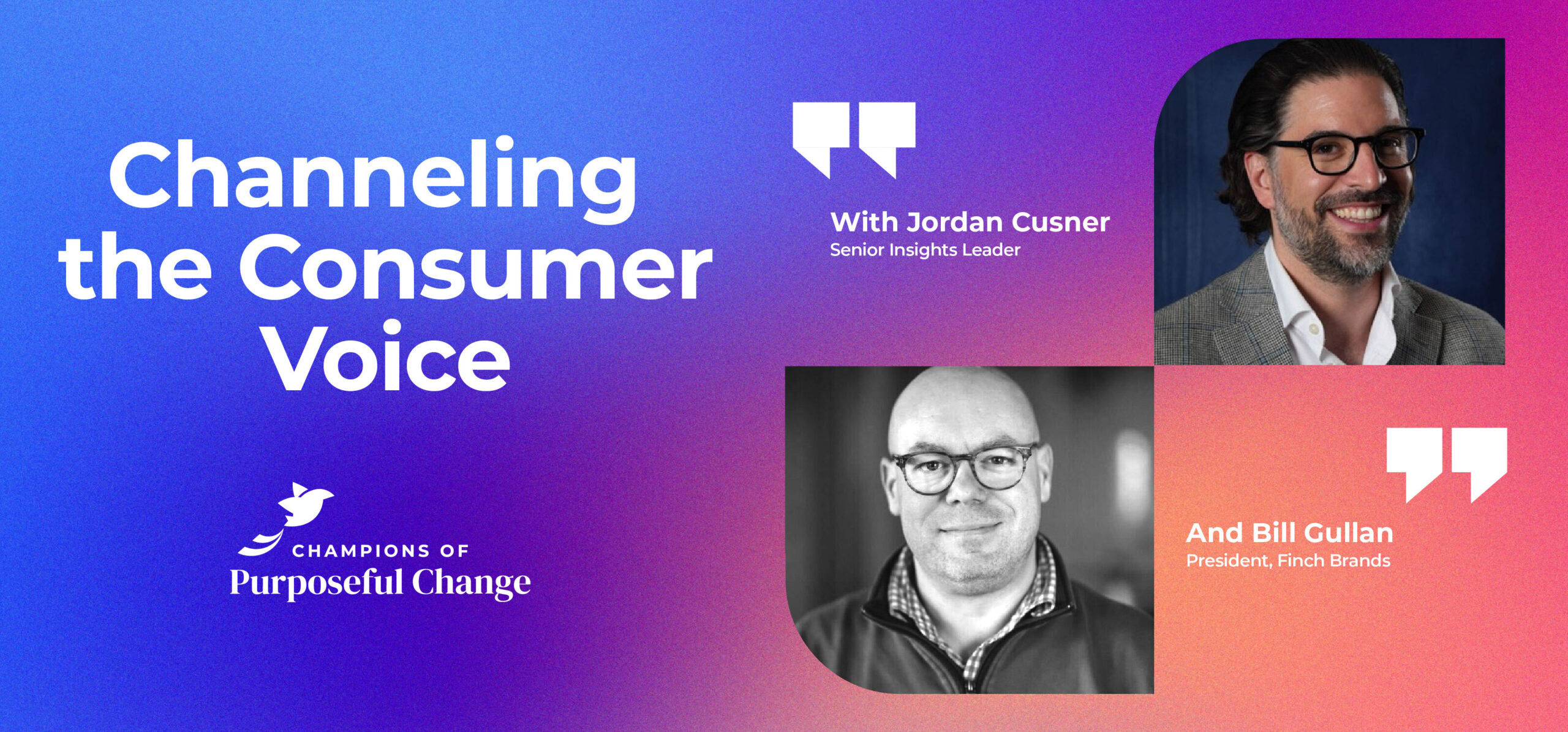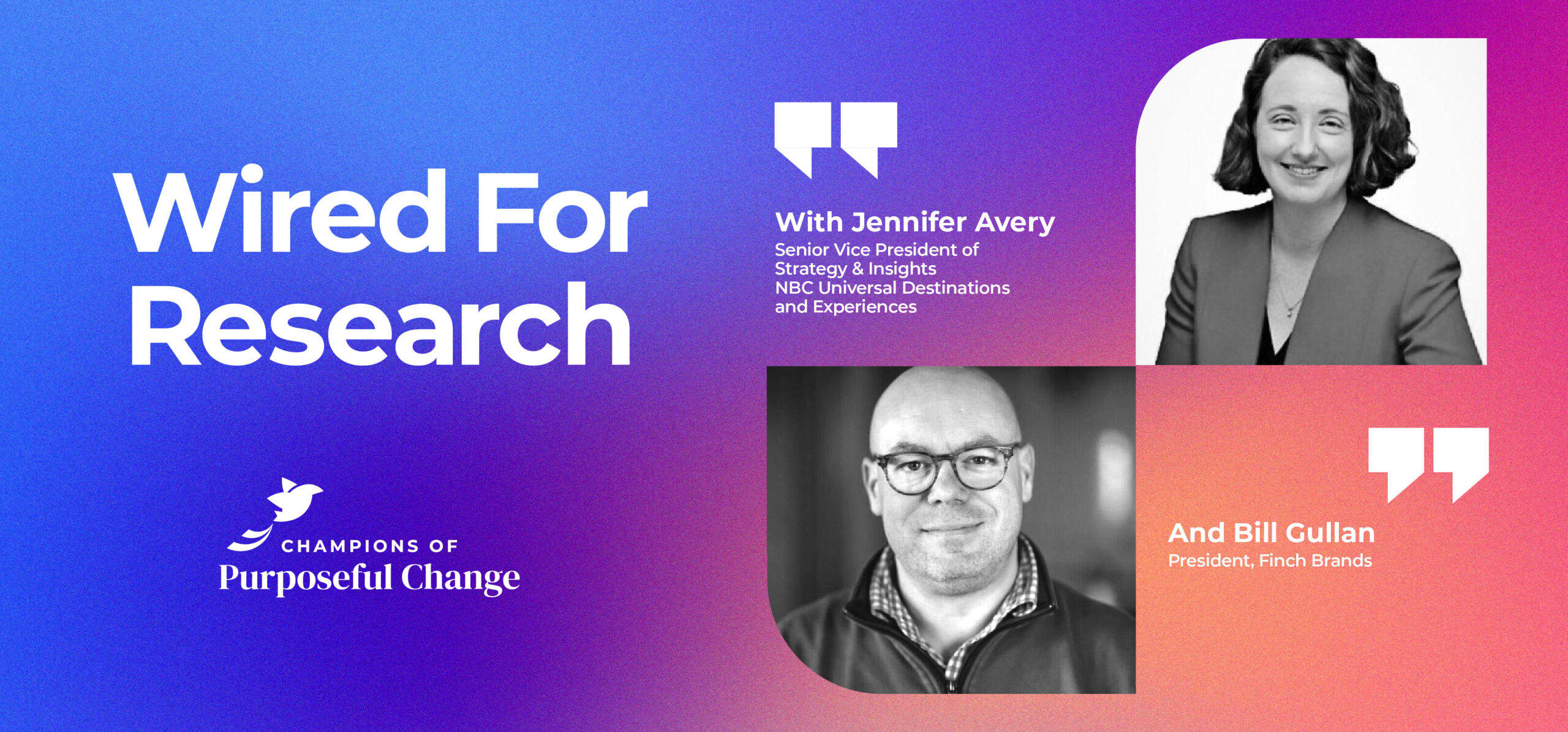One Big Idea: Changing the Game
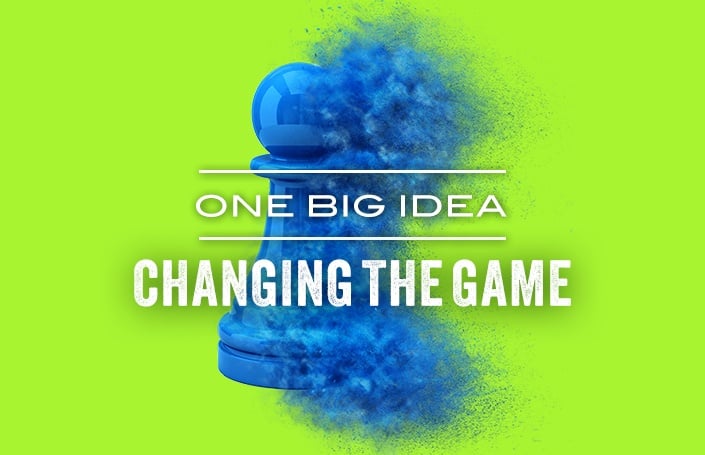
Brands must adapt with evolving social trends in order to thrive, but the most powerful brands are themselves leaders. Finch Brands’ own Mary Hanna speaks about her tenures at Martha Stewart Living Omnimedia and Toys”R”Us through the lens of women’s empowerment, an important cultural movement. If you like our podcast, please subscribe and leave us a rating!
Podcast: Download Subscribe: iTunes | RSSTranscription
Bill Gullan: Greetings one and all. This is Real-World Branding. I’m Bill Gullan, President of Finch Brands, a premier boutique branding agency. This is One Big Idea. This week’s topic we’ve entitled Changing the Game. We’ve talked a lot on this podcast about how commerce in someways is down streamed from culture. What I mean by that is, the things that are evolving in our culture in the way that we interact with one another, the way that we put forth our values, and the things that we care deeply about, ultimately, sometimes quickly, but sometimes gradually manifest itself in the products that we sell and what the work environment is like.
We have a special guest today to speak about that. Particularly, related to an issue that is of great importance to her personally and has also reoccurred as she’s built an amazing career. That is the topic of empowering women in the business world within company cultures as well as nurturing a leadership profile in girls as they think bout their own future. Our special guest is Mary Hanna. Mary is the Director of Brand and Marketing Strategy at Finch Brands. We’re really glad to have you. Would you tell our dear listeners a bit about what’s lead you up to this point on our fine team?
Mary Hanna: Yes and I’m happy to be here. I started my career actually while I was still in college with an incredible opportunity to intern at Martha Stewart Living Omnimedia. I was obsessed with Martha Stewart for years before that. I only prepared her recipes, I only did her crafts – I got my dream internship, so I worked so hard to make sure that when I graduated I was going to get a job there, and I did.
It was the most incredible, but also taxing job I think I could have ever experienced. It started in the ad sales team on the, well, it was called the integrated solutions team, which was their marketing, their ad sales marketing team. I supported a department of about forty people. I did their projects, and I would run out in the middle of blizzards and snowstorms to buy gallons and gallons of candy, and whatever it is that they needed. After a couple years doing that, I switched over to the merchandising team where I was a project manager. I still have my Martha Stewart notebook with me, which I use all the time.
Bill: Encouraged me to use one too. I now have it. It’s awesome. It’s the best.
Mary: I did some time there working on the Home Depot account and all of the Home Depot products that Martha Stewart had. After that, I really fell in love with retail and I decided that I wanted to do it full time and on the retail side, so I found a job at Toys“R”Us, where I worked on the brand marketing team for about two and a half years. I learned everything from what a Skylander is, to how to really make sure that you have the best Black Friday that you could possibly have, which is every retailers bread and butter.
That was a wonderful experience, but I wasn’t making the ads, an agency was. Then I said, ‘Well, I want to go and do that.’ That’s how I ended up at Finch. Now I’m making the ads. I’m telling the companies what the right thing that I think that they should do and it’s a ton of fun.
Bill: Well, we’re having fun too. We’re so glad you’re here. Mary’s role at Finch is making the ads, in part, but also as a really strong manager of projects. Really strong intellectual contributor to all of this work, whether the scope be research driven brand strategy, or marketing planning, or creative execution. Whatever it is, Mary’s a great asset.
I know that something that’s been important to you, and when we look at your career it’s an interesting topic. One of the reasons we invited you on is, we think about the role of women in our commercial life in the US and how that extends into how they regard themselves and their own development and everything else. A lot of ink about this, a lot of people care deeply, I know you do, about this.
When we look across your career, I mean, Martha Stewart as noted, what an amazing environment and opportunity it sounds like. The interesting paradox perhaps there, is that Martha herself and the company she’s built is a really strong symbol of breakthrough leadership on the part of women and female leadership and building great companies. At the same time, the product offering in some ways is geared for a more traditional sense of femininity. I mean, you may not agree entirely, but it seems it’s about making homes. It’s about meals. It’s about the overall aesthetic that one can bring to that.
Then at Toys“R”Us, there’s a lot happening in the toy category related to women and girls. We’ve obviously seen the emergence of brands. I know you love GoldieBlox that turn gender stereotypes on their head a little bit for girls. We’ve seen even old star works like Barbie are doing some new things with regards to body image, etc. As you think about this sort of topic or set of topics that are really important to you and reflect on the things you’ve done, how do you see the world at this point?
Mary: I think what really shaped my view of women empowerment in the workplace and empowering girls to reach their fullest potential and not think that there’s limitations or a glass ceiling, or whatever the case is, was my time at Martha because I was surrounded by incredibly powerful women. The company was run by women, and it was for women, and it was an incredible experience to see that combination of we’re business women, but we also make a product that can be deemed as ‘women are only homemakers,’ which I think is not accurate. I think what Martha Stewart does is, it enables women, no matter if they’re stay at home moms, working full time, working part time, students, whatever the case is, to be able to live the life that they want to enjoy. Part of that is I like to cook. That doesn’t make me a less powerful woman because I like to cook and I have a craft closet that’s ginormous and it’s filled with Martha Stewart things.
Bill: Nice. Very loyal till the end, right?
Mary: Yes I am, but what I also learned is that Martha Stewart is genuinely an exceptional homemaker. It’s an art and she’s true to it, but I also have seen her in meetings where she comes up with a brilliant idea that could be a multi-million-dollar idea for a product, and she says, ‘Somebody write that down.’ Next thing I know it’s in the product line, but she also knows the Japanese way of making fileted fish right off the top of her head. I think that there is some tension between is she a homemaker and a business woman, or is her business homemaking? I see that there’s some of that tension.
Then, when I went to toys, I think I went at a very important time because it was when things like GoldieBlox were really taking off, where it wasn’t okay to just give girls dolls and then have them sit in a room and play pretend. It was when Doc McStuffins came out and girls knew that they could be doctors and vets and this is what they were play pretending to do.
Bill: Big hit in my household.
Mary: Yes. It is a hit everywhere and I loved it. Same thing with GoldieBlox. Lego, I think is an incredible brand, but it’s definitely boy centric. Turning the bricks pink just wasn’t working the same way as what GoldieBlox has done, which said, okay girls like to build, but they like to build in a different way. They like to read while they build and build something that corresponds with a story. They modified the toy for the girl, instead of having the girl modify what she’s interested in for the toy.
I spent a lot of time there really trying to make sure that what we were positioning wasn’t demeaning and that it was empowering to girls. A lot of the toys are. You mentioned Barbie. Barbie just put out a commercial that was all about girl empowerment. This little girl is standing in front of a huge auditorium of students and she’s pretending to be a professor. That’s the things that I think that we should be encouraging girls to do. I’ve been so lucky to be surrounded by very powerful women, but I think that had my career started out any other way, perhaps I wouldn’t be as confident as I am that because I’m a woman I can’t do certain things. That’s not anything that’s ever crossed my mind.
Bill: There’s obviously so much happening across the companies you reference, but generally speaking around inclusion. Around helping folks achieve their full potential. Around helping women at all ages understand that their options are not constrained, that their lives and careers can go as far as they want, in whatever direction they want it to go. Society has gotten far more progressive on issues like that. It’s all to the good. We have tremendous respect for our colleagues, male and female at Finch Brands. We find many of our clients have elevated female leaders. It’s a great time, seemingly, with more work to do of course, of progress and opportunity.
I guess the sort of One Big Idea piece here, is two levels of this. One is just the specific issue of female empowerment and the activation of potential being an important, almost dominant cultural theme, and the degree to which that impacts the way our clients can think about brand development, and creative, and communications. Having a progressive perspective on this and being in step with where the marketplace is going.
The other piece is a more general idea, which I think we’ve talked about before, which is brands that can capture or drive, but at the very least capture the zeitgeist – this evolving dialogue that we have in our culture around all sorts of issues that may be related to diversity and inclusion, that may be related to achieving potential and thinking about life cycles, and career paths and everything in a very broad way. Whatever the cultural norms, practices, and trends are that agree to which brands can wrap them from a product development, from a communications perspective, wrap their arms around these types of things, helps brands go farther.
We spoke earlier in this podcast about examples of brands that have done this effectively, that we’ve had the chance to work on. ThinkGeek is an example. Not about women as much as about this notion of the ‘geek’ stereotype changing in a material way in a company that seeks to represent that and be of, by, and for geeks. That community needs to be contemporary related to how the notion of a geek changes. We’ve talked about Conair as referencing, as well as reflecting feminine confidence and the way in which that confidence is forged. Then, through Mary’s career and all the other things that we’re doing, the ways in which brands and clients of ours can wrap their arms around, not only what’s right, but the movements that we’ve had in our culture.
So glad to have you. Any closing thoughts as we adjourn this week?
Mary: I appreciate being invited here and being able to speak about a cause that I know that I talk about in the office all the time. To finally have a microphone to talk about it with, I appreciate the opportunity.
Bill: Absolutely. That’s One Big Idea for this week. Grateful as always for the participation of our listeners across the many platforms in which that participation is invited, from Twitter, to Facebook, to app store review, to everything else. We’ll be back in a week. Hopefully it’ll be dry, it’ll be warm, but signing off none the less, from the Cradle of Liberty.
